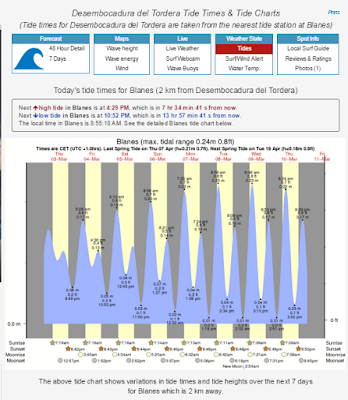THE BEACH:
 |
photo number 1:
 |
| photo number 2: |
|
 |
| photo number 3: |
 |
| photo number 4: |
Cala Sant Francesc beach is wide and very beautiful. On the right there is a stone wall and if you look on the left, there is a rocky area and a door which has access to a path along the coast. In the middle, there is a sandy beach where people can sunbathe and go for a swim.
THE WATER:
 |
| photo number 5 |
Secchi Disc Data:
Depth Secchi Disc (Value A) : 17 m
Depth Secchi Disc (Value B): 17 m
Mean Depth: 17m
GPS: Lat. 41.672559/ Long.2.796407
Lat: N 41º 40' 21.2118"/ Long: E 2º 47' 47.0646"
..... on the boat
 |
| number 6: Picture of Secchi Disc | |
Temperature sea water surface: 11ºC
Time: 12:15h
Date : 10/03/16
GPS:
: Lat. 41.679167 / Long.2.8077778
Lat. N 41º40'45'' / Long. E 2º48'28'' .....
on the beach
 |
| photo number 7 |
We wrapped the thermometer in order to protect it and then we attached it to one end of the cane. The cane was provided by a teacher. It was from the forest near the school.
The MODIS Aqua data:
The tides:
the beach of Santa Cristina
desembocadura (the river mouth) del Tordera
After creating the graphic we realized that the tidal range was related to the lunar phases.
 |
| the moon phases from <http://www.space.com/images/i/397/i02/moon-phases-101111-02.jpg?1289850890> |
Convection currents:
Water density/ Salinity/ Temperature:
Thanks:
to the FP-initial PQPI and their teacher: they arranged the Secchi disk for us. We want to express our gratitude for creating this amazing material for us.
And finally we would like to express our gratitude to Joan Musoll for going with us in his rubber dinghy to help us take the Secchi disk data.















































